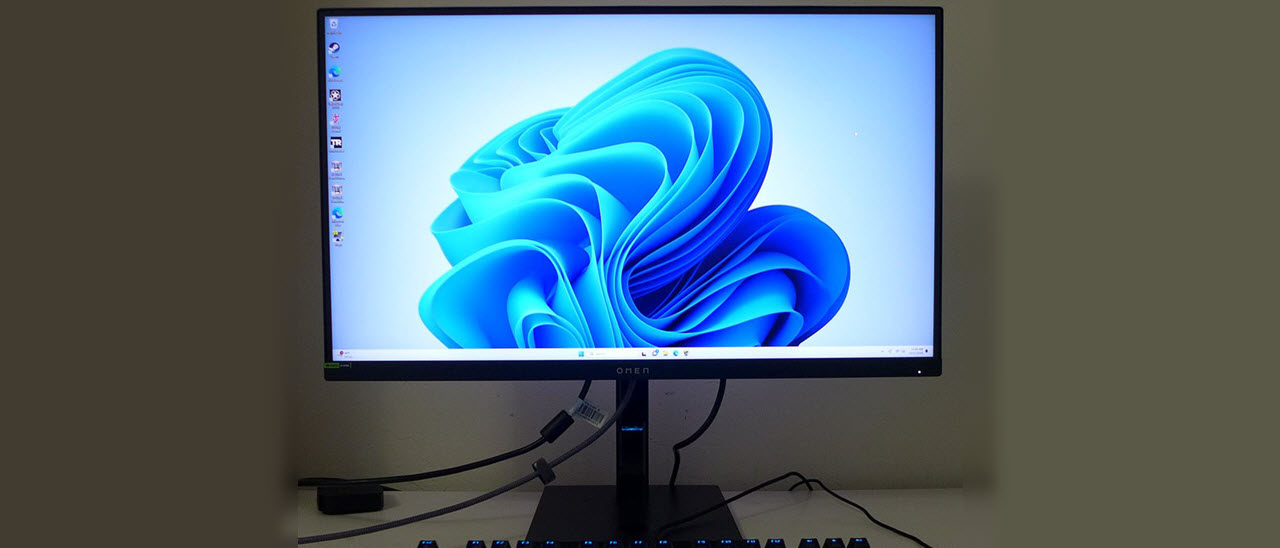Why you can trust Tom's Hardware
The Omen 27qs is one of the few wide gamut monitors that defaults to sRGB for SDR content. You can use it without changing a thing if you wish. For the larger color gamut, choose Native. Then, you will need to calibrate.
Grayscale and Gamma Tracking
Our grayscale and gamma tests use Calman calibration software from Portrait Displays. We describe our grayscale and gamma tests in detail here.
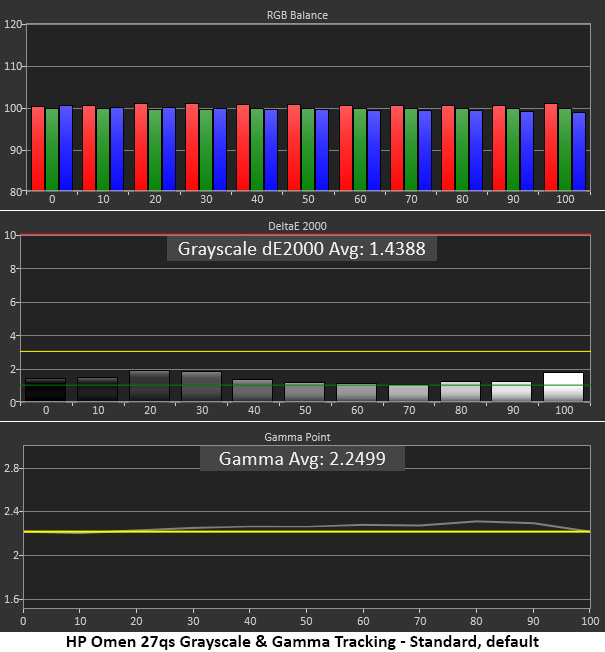

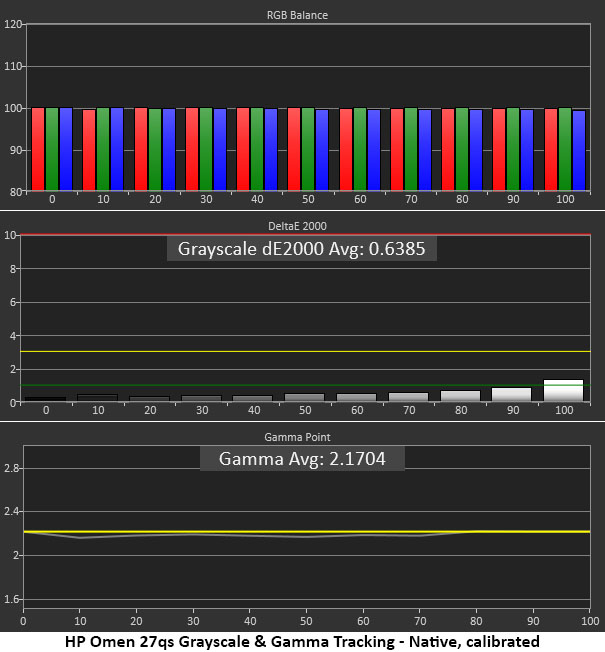
Beginning with Standard, we see visually perfect grayscale tracking over the full brightness range and gamma that’s just slightly dark from 30 to 90%. That’s pretty close to perfect and garners no complaint from me. I could not improve upon this chart using the RGB sliders. It’s an ideal SDR color mode.
If you want a wide gamut for all content, Native provides that but requires some attention for the best results. The blue tint is visible from 50 to 100% brightness, making the image flat. Gamma is visually perfect, though, which is a good thing. By reducing the blue slider, I could eliminate all grayscale errors. Gamma became a tad lighter, but the difference in luminance tracking is barely noticeable. This is excellent performance.
Comparisons
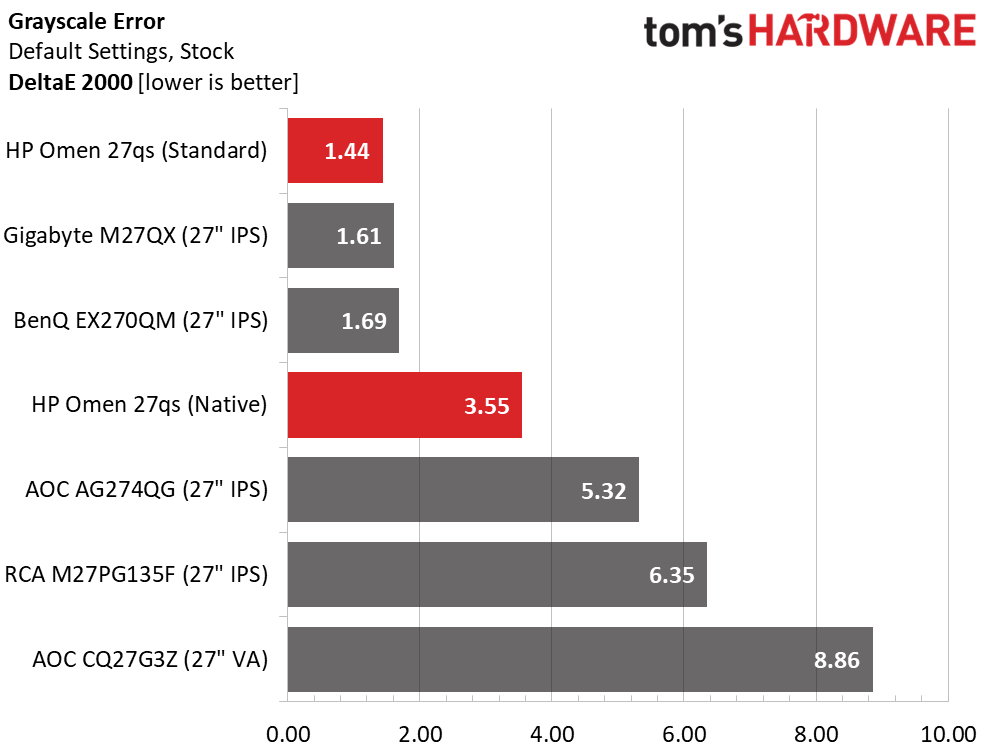
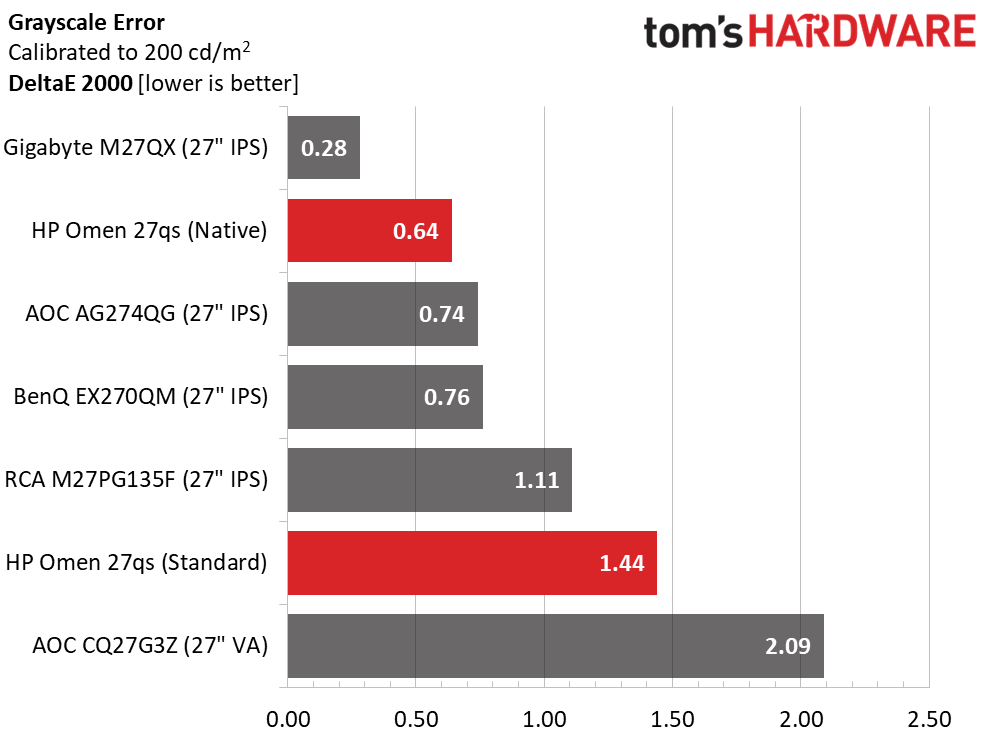
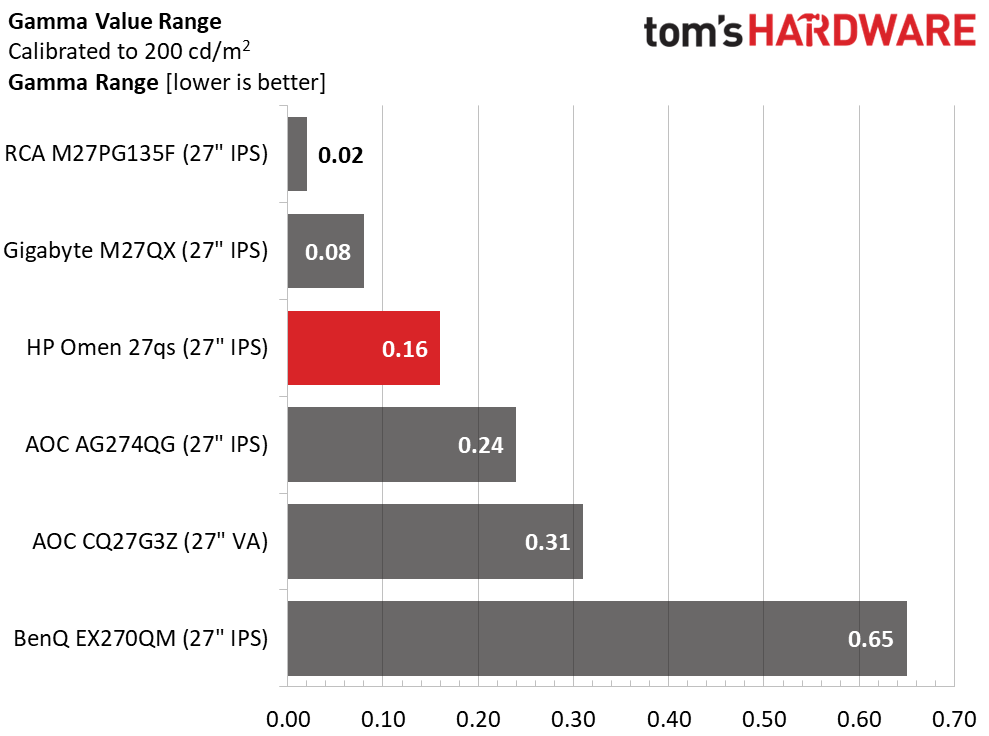
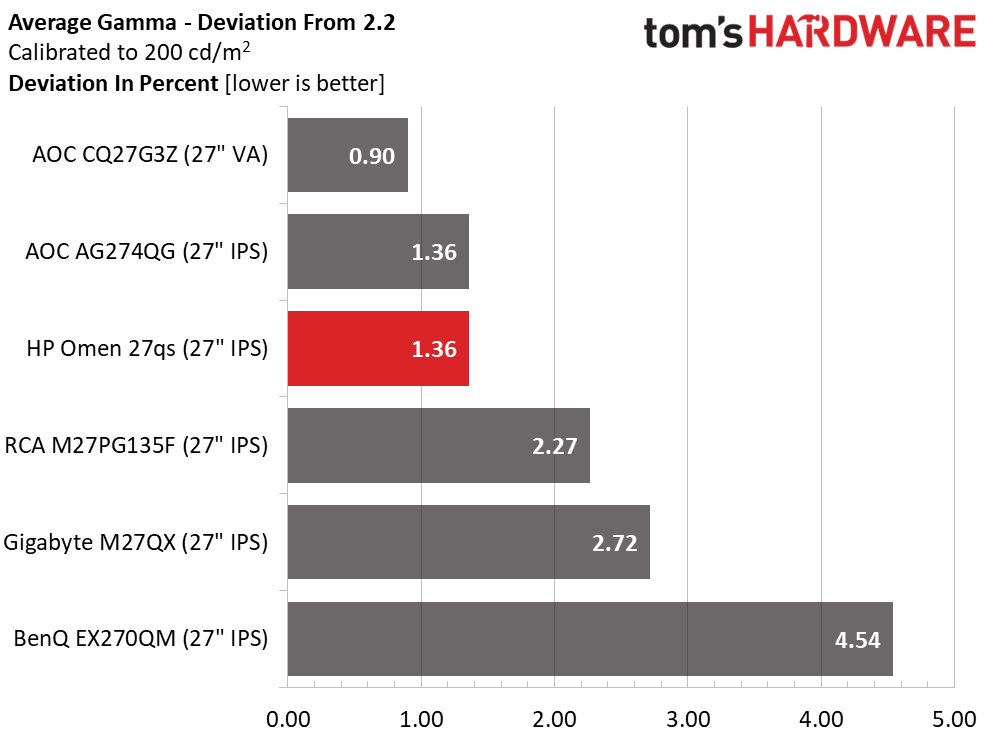
In the Omen 27qs’s Standard picture mode, 1.44dE was the best possible result. I could not improve upon this with the RGB sliders, and there was no need to. It looks just as it should. Native starts at 3.55dE due to its blue errors, so tweaks are needed. Reducing the blue slider dials the error down to a reference-level 0.64dE. It doesn’t get much better than that.
Gamma is about the same in Standard and Native modes, so I used the latter’s measurements for comparison. Value range is very tight at 0.16 with a deviation of 1.36% from the 2.2 reference. Not only does this maximize picture depth, but it also ensures accurate and vivid color saturation.
Color Gamut Accuracy
Our color gamut and volume testing use Portrait Displays’ Calman software. For details on our color gamut testing and volume calculations, click here.
Get Tom's Hardware's best news and in-depth reviews, straight to your inbox.
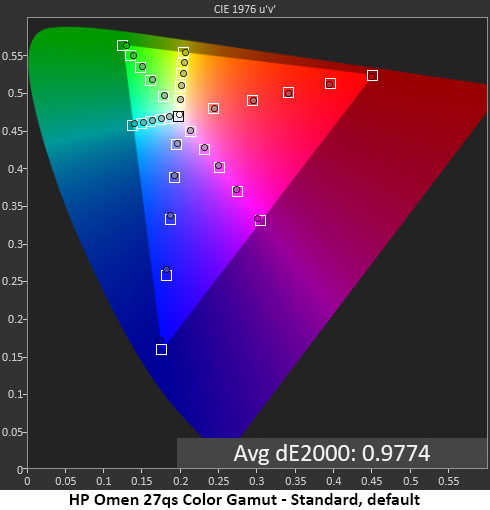
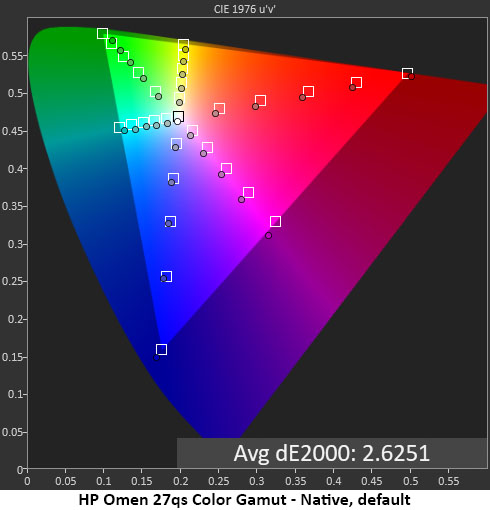
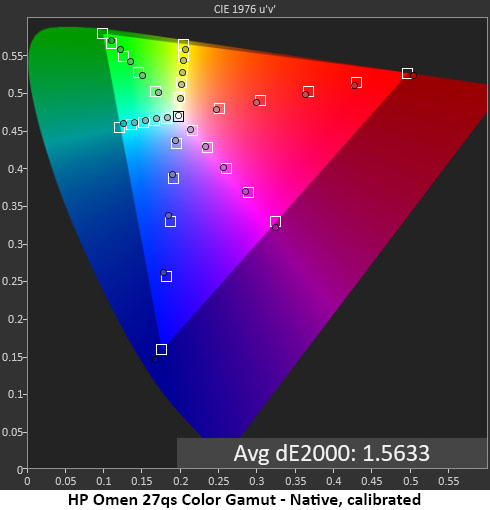
You can see by the first chart that the Omen 27qs correctly defaults to sRGB for SDR content. It hits that gamut perfectly with reference-level results. In Native mode, color is slightly under-saturated and there are hue errors in cyan and magenta. These are small issues given the overall average of 2.63dE. This is mainly due to the blue grayscale tracking I noted earlier.
With calibration, the error drops to 1.56dE and color is visibly more saturated. Every point is on or in contact with its target box. Aside from the slight green under-saturation, typical of wide gamut screens, this is exemplary performance. The Omen 27qs is very colorful and super accurate.
Comparisons
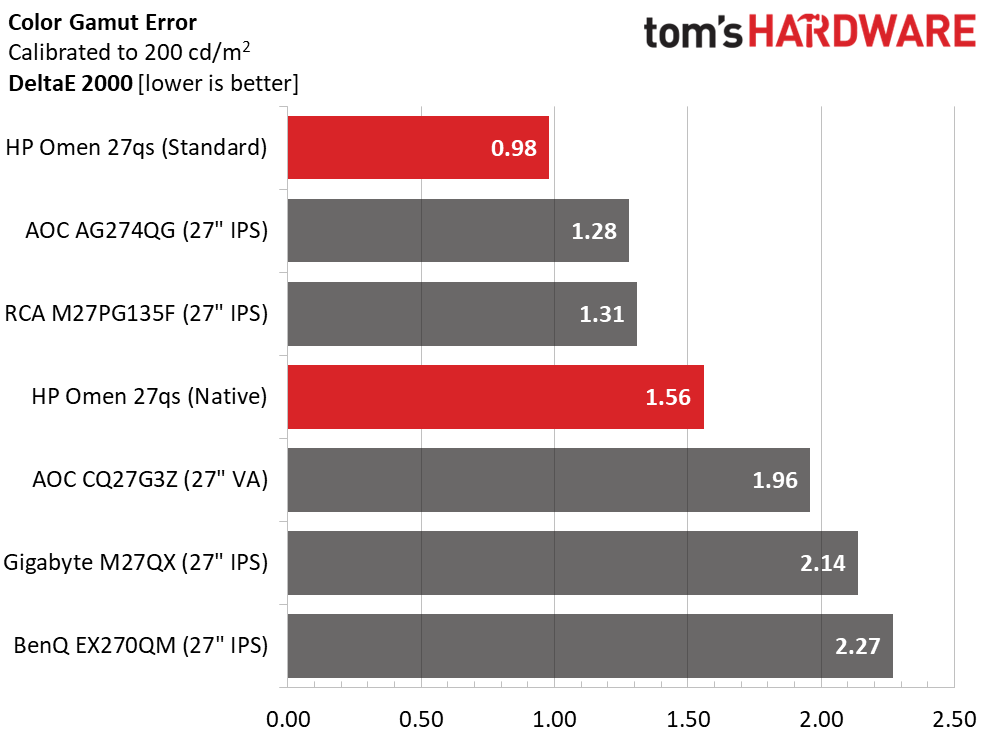
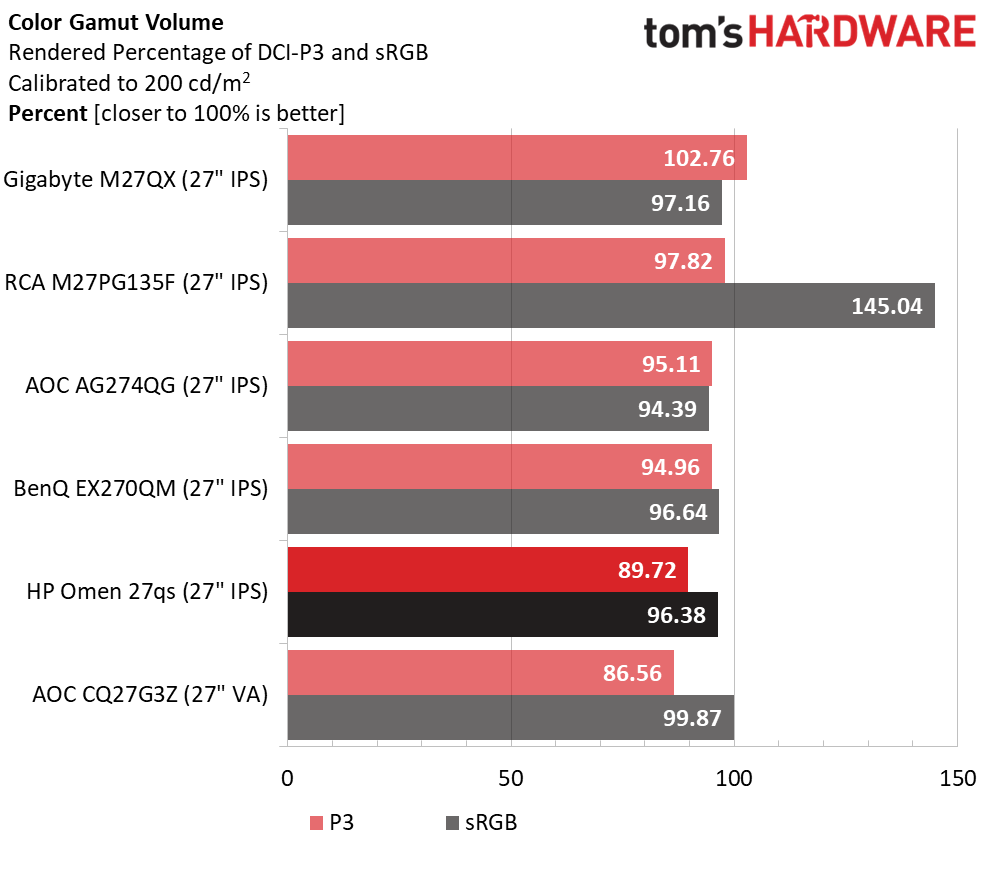
I’ve charted the Omen 27qs’s Standard and Native modes here as well. They both measure impressively with no visual errors. Given these color results, the other monitors are also excellent and I would not complain about any of them. It doesn’t get much better than this.
With more wide gamut screens filling the marketplace, the Omen 27qs’s 89.56% score is about average. Many newer displays are delivering just a tad more green to get their volumes closer to 100%. There is still enough color here for critical apps, though, especially in the sRGB realm, which sports over 96% coverage.
Test Takeaway: The Omen 27qs has a tad less color volume than some others, but the difference is small. It has few equals for out-of-box accuracy and once calibrated, boasts the same precision for wide gamut color. It didn’t dominate these tests, but it was at or near the top in all of them. Given the HP’s accuracy and superlative video processing, it is among the very best in class.
MORE: Best Gaming Monitors
MORE: How We Test PC Monitors
MORE: How to Buy a PC Monitor
MORE: How to Choose the Best HDR Monitor
Current page: Grayscale, Gamma and Color
Prev Page Brightness and Contrast Next Page HDR Performance
Christian Eberle is a Contributing Editor for Tom's Hardware US. He's a veteran reviewer of A/V equipment, specializing in monitors. Christian began his obsession with tech when he built his first PC in 1991, a 286 running DOS 3.0 at a blazing 12MHz. In 2006, he undertook training from the Imaging Science Foundation in video calibration and testing and thus started a passion for precise imaging that persists to this day. He is also a professional musician with a degree from the New England Conservatory as a classical bassoonist which he used to good effect as a performer with the West Point Army Band from 1987 to 2013. He enjoys watching movies and listening to high-end audio in his custom-built home theater and can be seen riding trails near his home on a race-ready ICE VTX recumbent trike. Christian enjoys the endless summer in Florida where he lives with his wife and Chihuahua and plays with orchestras around the state.
